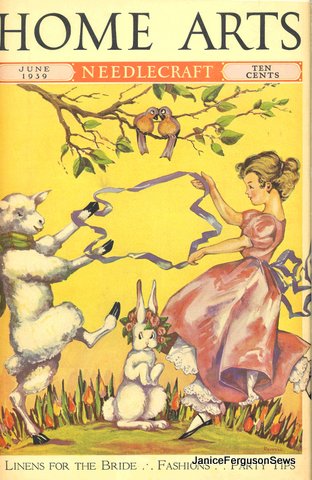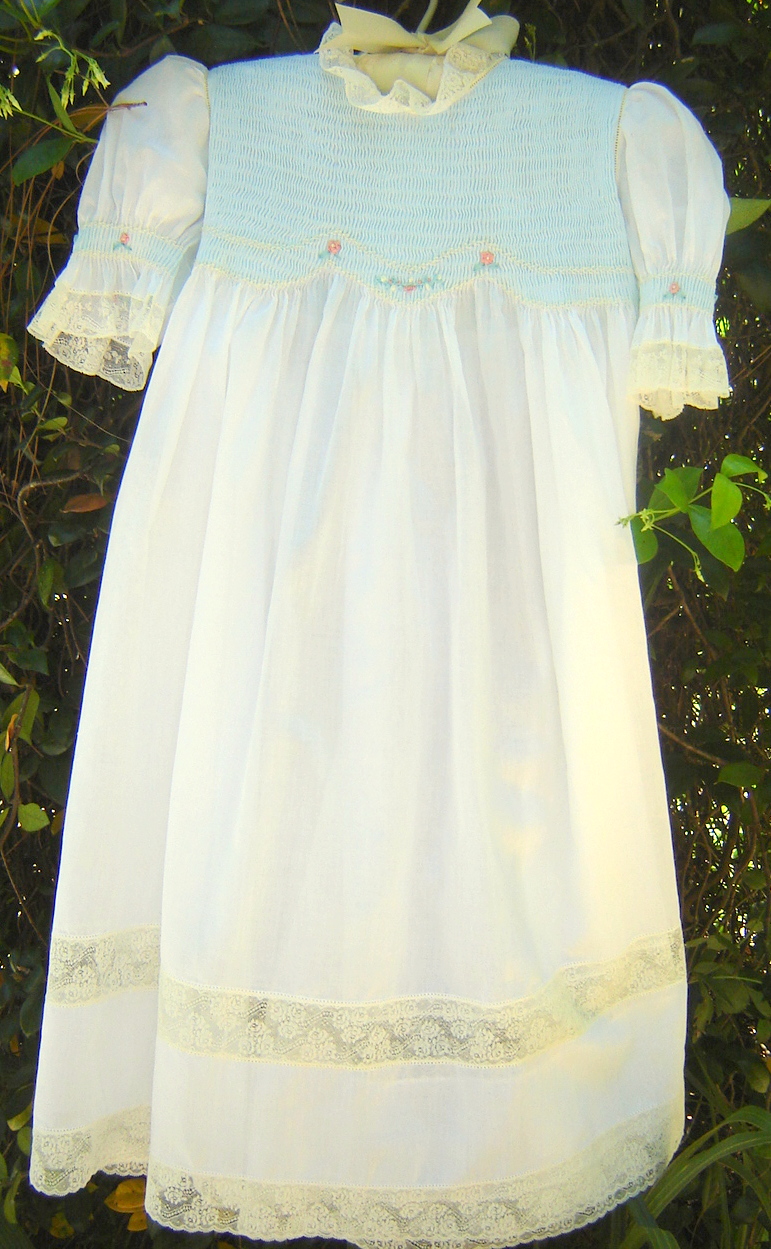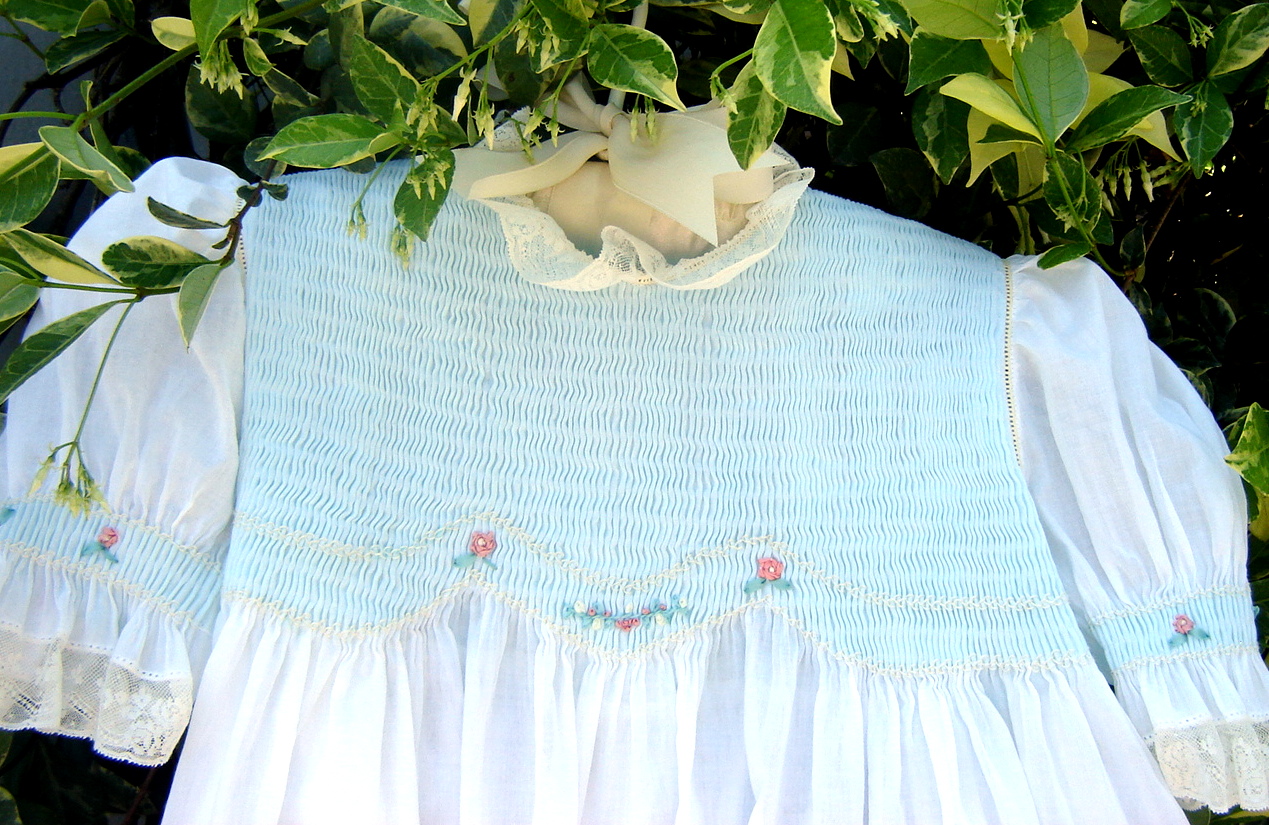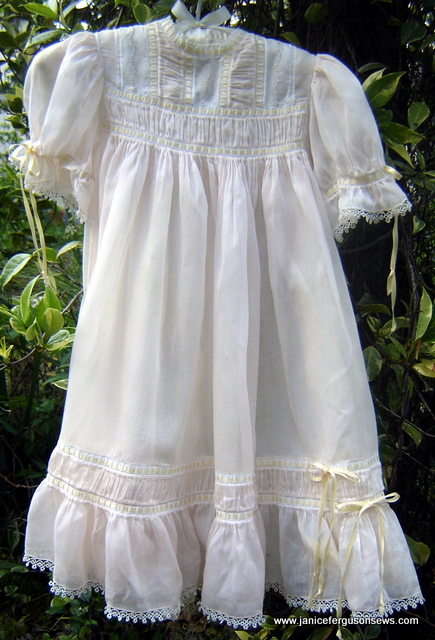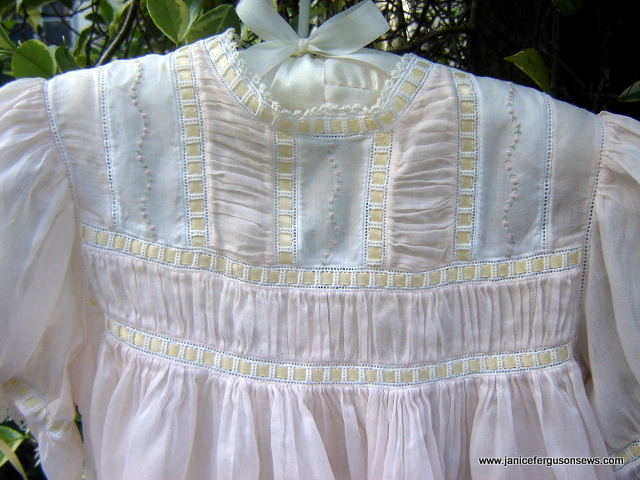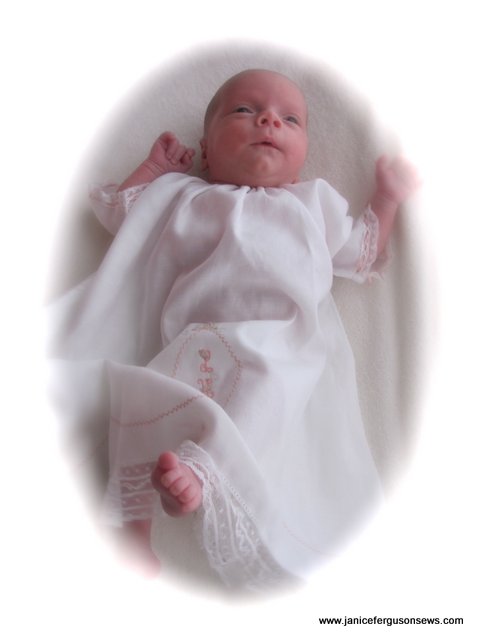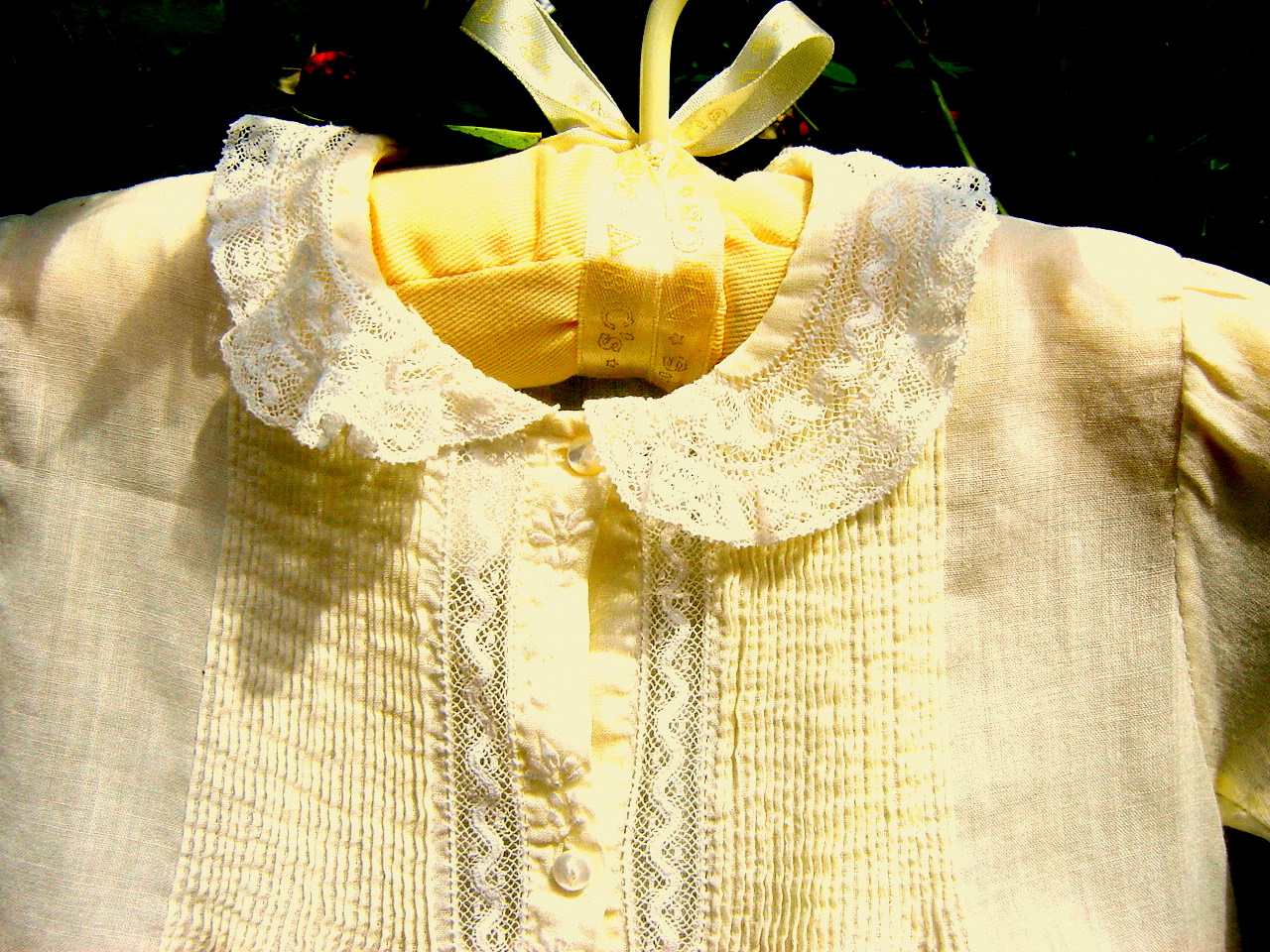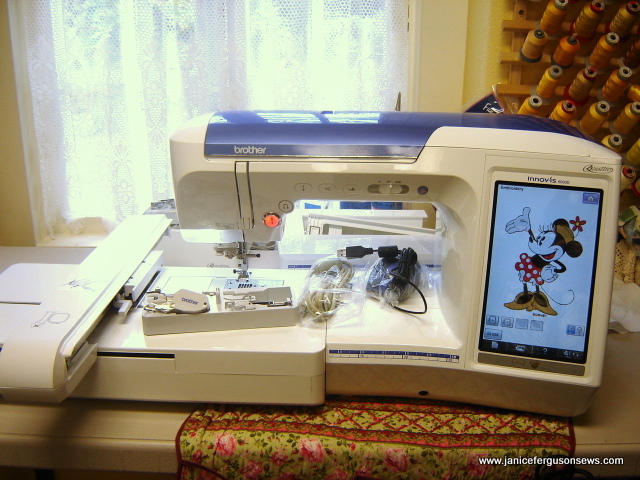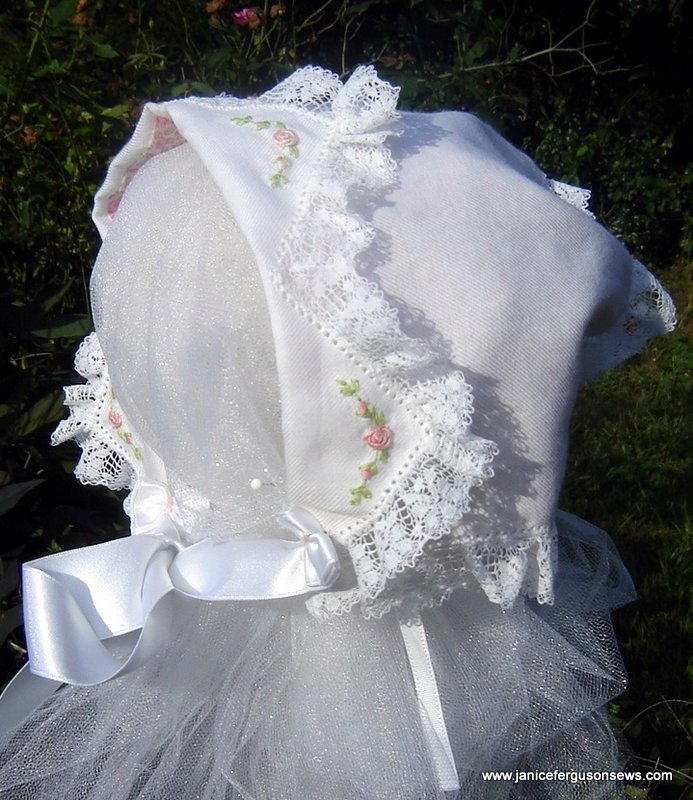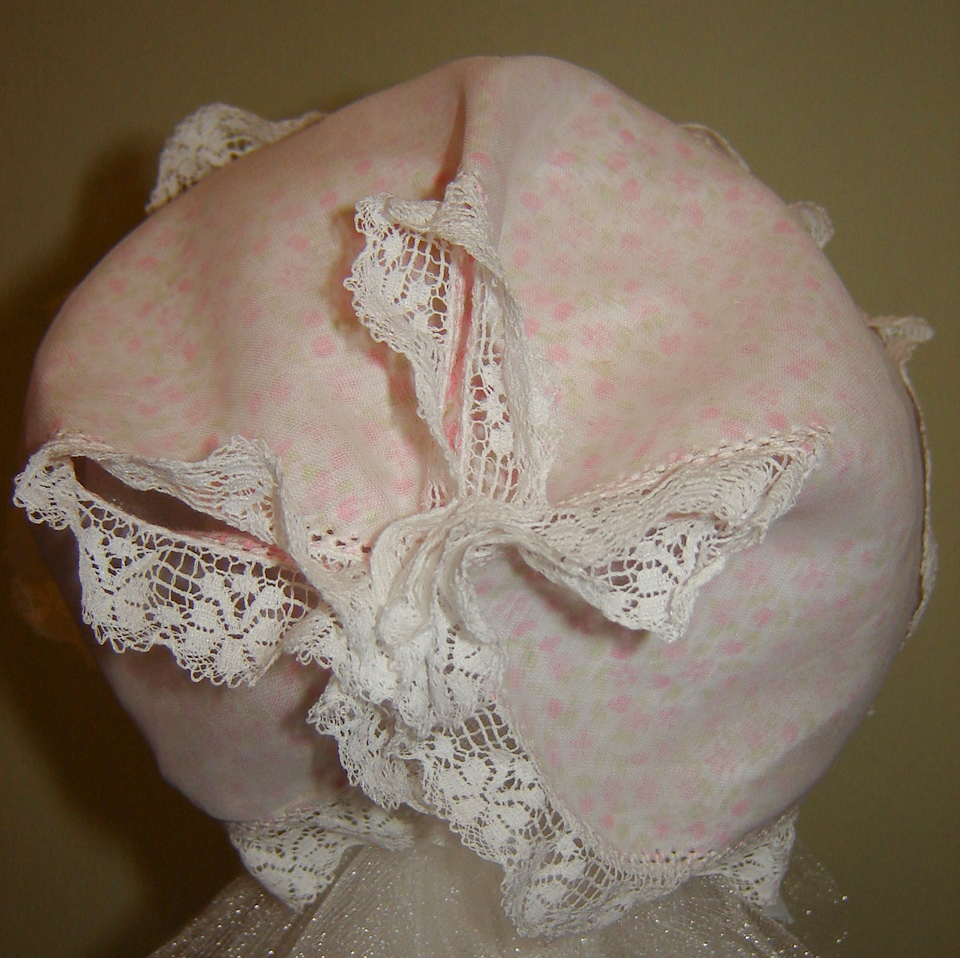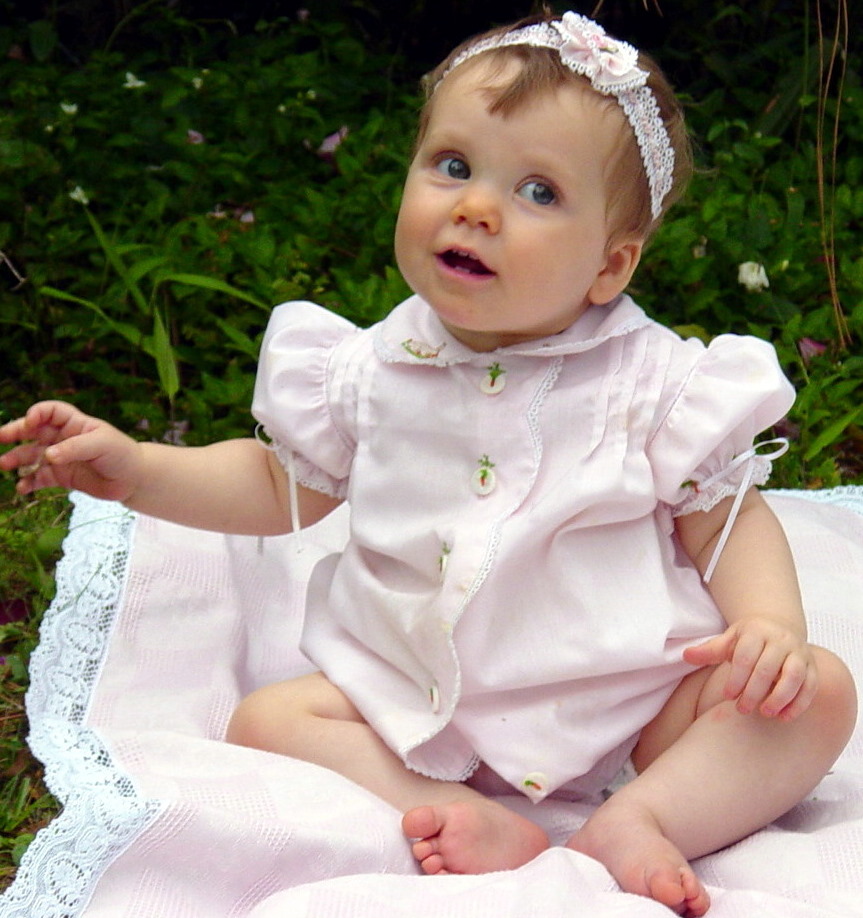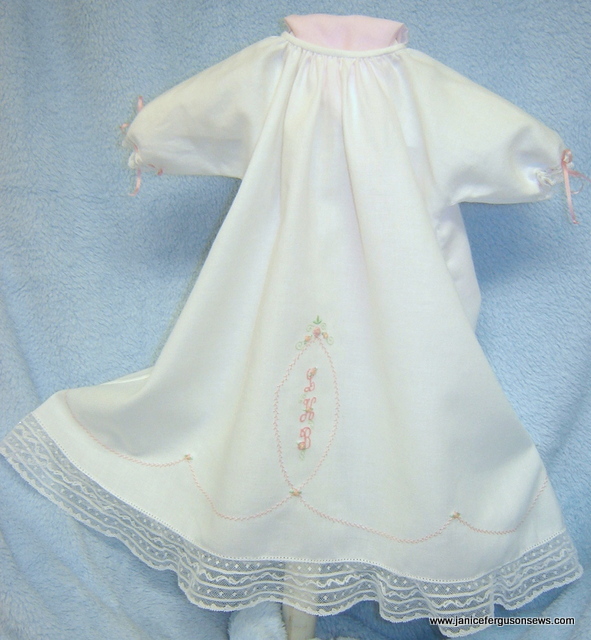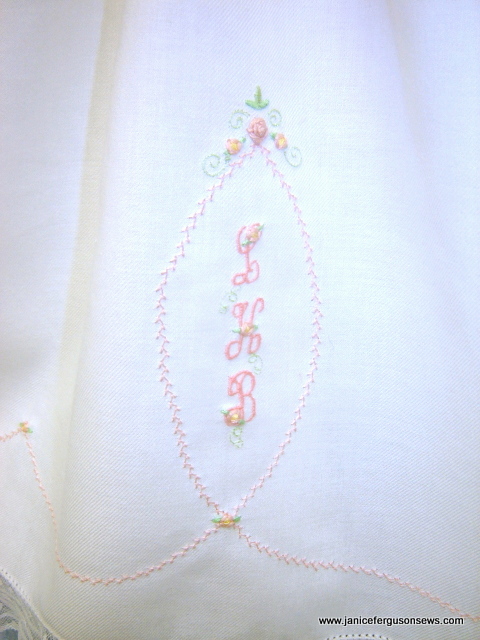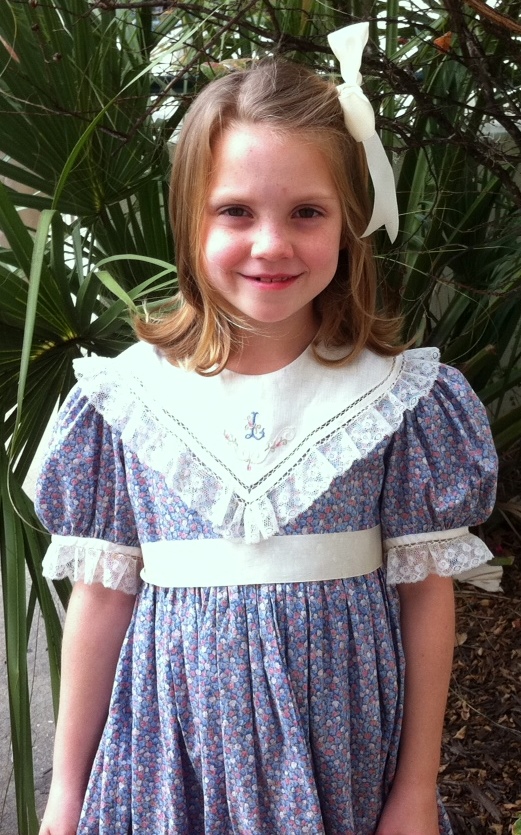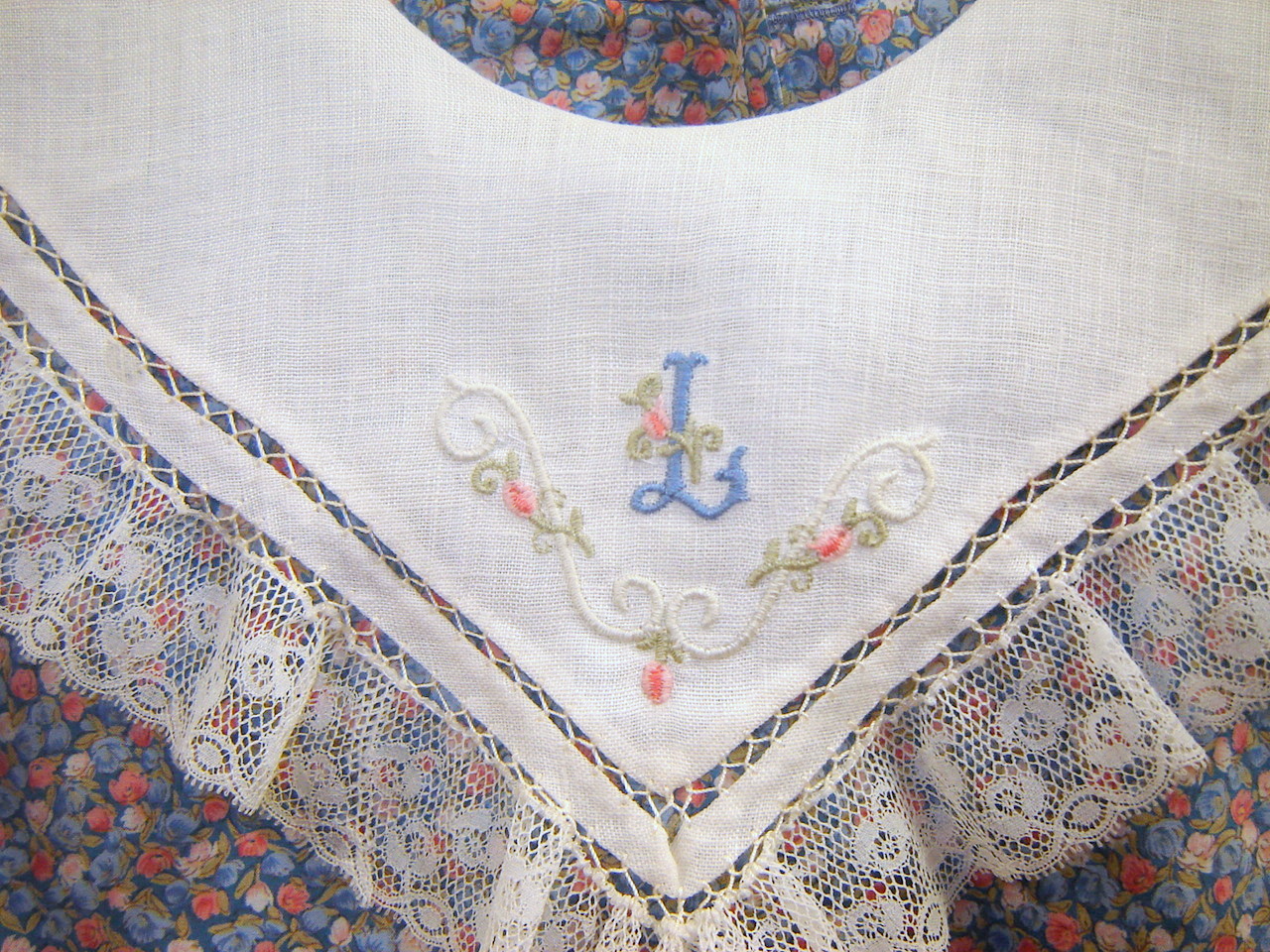In light of the interest in the free fil tire’ heart design for machine embroidery, I thought a rerun of this earlier post might be of interest. ~~~
“Nothing’s as mean as giving a little child something useful for Christmas.” ~Kin Hubbard

No one can accuse a doll bed of being useful. This was a Christmas gift for my granddaughter, Laurel.
The top sheet and pillow case are made from combed cotton batiste and trimmed with bias scalloped pink batiste, English lace edging, feather stitching and machine embroidery. If embellishments were made of sugar, these bed linens would qualify as a dessert. I think the bed looks delicious.
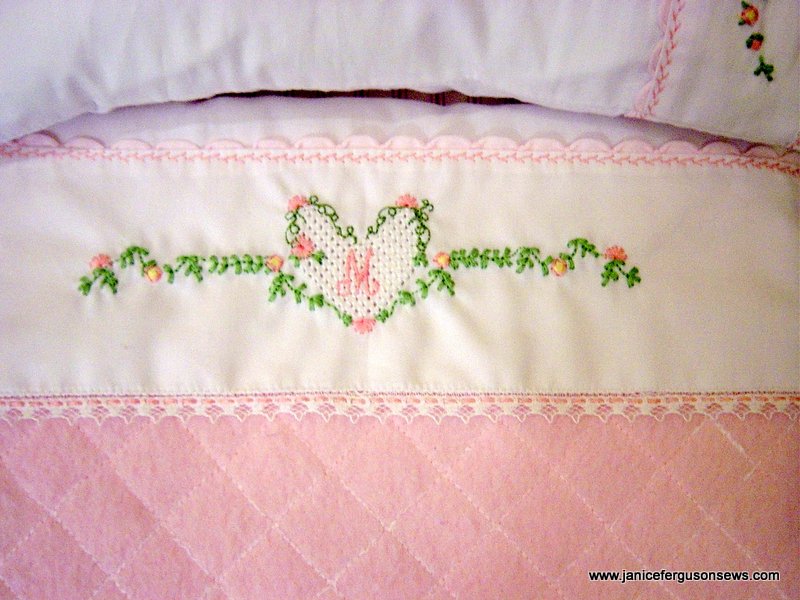
Laurel will receive the American Girls doll of my era, Molly. Thus, the “M” monogram, from my favorite alphabet in Brother’s PE-Design. The fil tire’ heart and floral spray which brackets the monogram are from two of the Fil Tire’ and Fancywork machine embroidery collections by Suzanne Sawko and me.
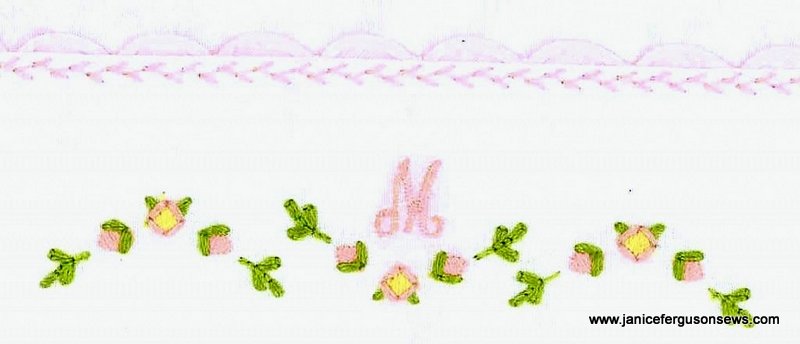
pillowcase embroidery and bias scallop trim
The bias scallop trim is one of my favorite techniques. It is worked with a blind hem stitch and thread matching the color of the fabric.
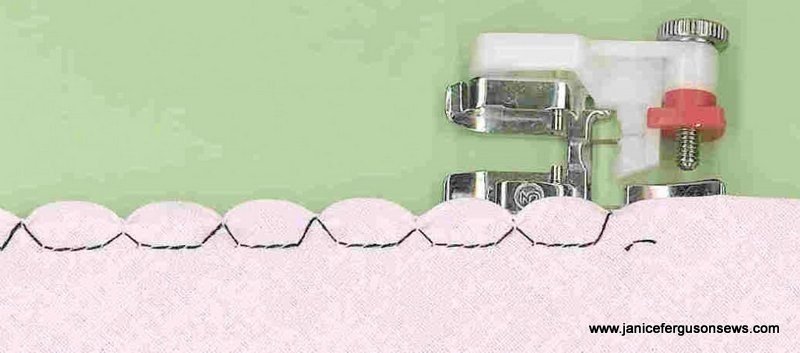
This photo shows the stitches in black so you can see how the stitch works. In order to get best results, you must use a bias strip of fine (thin, not necessarily expensive) fabric and practice a bit before getting the effect you desire.
The tiny 1/4″ English lace is another of my favorites. It has holes in the header that look so much like entredeux that the effect of that expensive and time consuming feature was achieved by simply tiny zig zagging this lace to a finished edge. For added detail, I have woven pink embroidery floss through the holes.
Polar fleece is a fabulous, sturdy, versatile textile. I wanted the effect of a whole cloth quilt and sought to achieve that look with the fleece. The biggest challenge was transferring the quilting design to the fleece. After much experimentation, I had success by tracing the design onto tissue paper. The fleece was very lightly sprayed with adhesive and the tissue quilting pattern patted in place on the fleece.
Using the walking foot for straight lines in the cross hatching and free motion for the curved, feathered hearts, my beloved Brother ULT was threaded with pink 80 wt. Madeira Cotton thread in both the needle and the bobbin. After quilting, the tissue is pulled away. The spray adhesive makes it difficult to remove all tissue, but gentle laundering removes the remaining bits.
The edges of the fleece were finished with the same blind hem stitch that created the bias scallop trim. The unusual fleece weave allowed the raw edges to scallop satisfactorily, but not as nicely as the bias cut cotton.
When using tissue in this and similar projects, I first wad up the paper tightly and then iron it flat again. This breaks down the stiffness and makes it easier to tear away after stitching. When the 8″ Stitch N Ditch is wide enough, I use that.
One of the neatest features of this set is a technique I developed out of necessity when my daughter went off to college and was assigned to the top bunk. Like Rebecca’s bedding, Laurel’s doll bed linen has at the foot of the sheet, buttonholes which are partnered with small buttons sewn to the underside of the fleece “quilt.” With these two elements of the bedding joined in this manner, a little housekeeper or chambermaid can make the bed with ease and some degree of respectability.
The rope bed came with no mattress, so I covered a piece of 1″ foam with pink candy stripe polished cotton, to suggest ticking. Laurel and I have talked about how beds used to be made and then looked at a few old feather pillows I have that are made of standard blue ticking.
I doubt the educational use of the bed makes it “useful.” Instead, I think it looks delicious, just the kind of bed on which I would like to rest my weary head.
O bed! O bed! delicious bed!
That heaven upon earth to the weary head.
~Thomas Hood, Miss Kilmansegg – Her Dream

